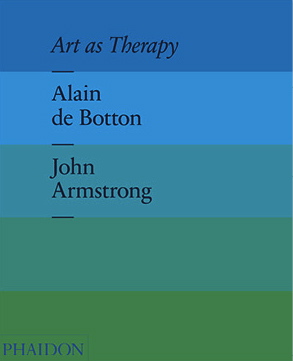Today I am pleased to bring you samplings of a handful of my favorite bands. It so happens they are all mostly-female or female-fronted punk bands. This fact to me seems almost incidental to my enjoyment—these are all fantastic musicians, songwriters, and/or personalities. And yet their commonalities are highly remarkable all the same. Punk introduced aggressive, all-female bands like The Slits and frontwomen like Siouxie Sioux who never had to play vulnerable objects, desperate seductresses, jilted lovers, femme fatales, etc. and yet still manifested their power in their sexuality as well as in their fierce intelligence and fury. In the late ’70s, women strode out in front as leaders in punk scenes in the UK and US, and helped to change the gender politics of rock and roll.
First up, the Runaways, a band best known today for the later careers of guitarists Joan Jett and Lita Ford. The Runaways tend to get unfairly pegged as little more than wards and projects of manager Kim Fowley, but the L.A. band formed organically around Jett and drummer Sandy West in 1975 and succeeded in their own right after splitting with Fowley in 1977. While they did not technically begin as a punk band, they briefly became associated with several New York and London punks, especially due to Jett’s orientation toward glam, garage, and punk. Ford, known for her flashy guitar solos, wanted to go metal (and later did), and the band pulled apart in 1978. The Runaways were so rock n’ roll that they were biggest in Japan, especially their song “Cherry Bomb” from their first, self-titled 1976 album. Watch them play the song above on Japanese TV in ’77.
Next (and my ordering here means nothing, by the way), The Slits. When German-born frontwoman Ari Up (stepdaughter of John Lydon, as it happens) passed away from cancer in 2010, many, many people mourned her death. And many more sent “Slits” trending on all the social networks. It was long past time then for a more public profile of the band, which reformed in 2005 but mostly absent much critical notice. Arising in 1976 from members of a band called Flowers of Romance (later the name of an album and song by Lydon’s Public Image Ltd.), the mostly all-female Slits made a very different sound from the Runaways somewhat formulaic hard rock. Like the Clash, with whom they often played, the Slits evolved from raw street punk to taking reggae ideas and making something new, in their case something weirder, wobblier, and more angular than most anyone else at the time (though later male post-punk bands like Swell Maps and Lydon’s PIL took much from them). See them do “Typical Girls” above in a rare music video, and check out their cover of “Heard it Through the Grapevine.”
Siouxsie Sioux, of Siouxsie and the Banshees, and later the Creatures, began her career in London’s punk scene as a follower of the Sex Pistols. In a scene thronged with inventive kids competing for attention, she stood out. Once she decided to take the stage herself (after an impromptu jam of “The Lord’s Prayer” with guitarist Steve Severin and Sid Vicious on drums) and form her own band, she seemed to Slits guitarist Viv Albertine to have arrived “fully made, fully in control, utterly confident.” Siouxsie was “unlike any female singer before or since,” wrote rock journalist Jon Savage, “commanding yet aloof, entirely modern.” She was also a phenomenal songwriter and, along with The Cure, Bauhaus, and The Damned, gets credit—for better or worse—for the origins of goth rock. See Siouxsie command the stage in 1978 above, doing “Hong Kong Garden.”
I feel I would be most remiss if I did not include Wendy O. Williams. As we seem to endlessly debate the social value of certain female pop stars clumsy attempts to shock us, Williams spent most of the ‘70s onstage topless, sawing guitars in half with chainsaws, and setting cars on fire. Was her band, the Plasmatics, any good? It’s hard to say. They were… uneven. Not much of a singer, Williams and the Plasmatics embraced a more raucous version of the Runaway’s hard rock and eventually moved toward metal. This is not necessarily music you listen to, it’s music you experience, in the sheer amount of barely-controlled chaos Williams and the band conjured onstage. Some of the stunts might look silly in hindsight, but bear in mind, she pushed the boundaries of decorum over thirty years ago with the kind of sexual frankness and power that still makes our culture very nervous. Williams’ antics made her a prime figure for television (like gross-out punk provocateur G.G. Allin, she became something of a novelty act on the talk-show circuit). See her above with the Plasmatics on Solid Gold in 1981, with the added bonus of an interview with the “Madame” puppet (of Wayland Flowers and Madame) after the performance.
I cannot begin to do justice here to the groundswell of excellent female punk bands from the ‘70s and ‘80s (not even to mention the ‘90s), and I can’t overstate their importance. Dr. Helen Reddington, former bassist and singer for ’70s punk band The Chefs, approvingly quotes journalist Caroline Coon, onetime manager of both The Clash and The Slits as saying: “it would be possible to tell the whole story of British punk solely through its female bands and artists” (this is much less the case in U.S. punk history). You might wish to check out the rather crudely made, but interesting documentary She’s a Punk Rocker and the database on punk77.com for more. I haven’t mentioned Patti Smith, but we cover her body of work frequently enough here. Yes, I’ve left off Blondie, and of course X‑Ray Spex, and two more favorites of mine—the sadly underrated but truly awesome Bush Tetras and the obscure, Devo-like Mo-Dettes. The list, as always, could go on, but perhaps some of you have your own favorite female or female-fronted punk bands. If so, add them to the comments, preferably with a link to audio or video.
Related Content:
The Art of Punk Presents a New Documentary on The Dead Kennedys and Their Gritty Aesthetics
New Documentary Brings You Inside Africa’s Little-Known Punk Rock Scene
Josh Jones is a writer and musician based in Durham, NC. Follow him at @jdmagness





